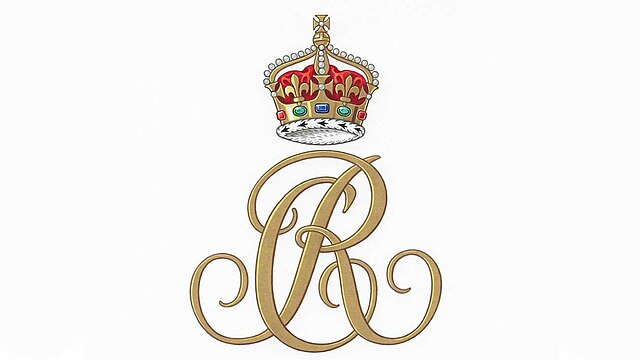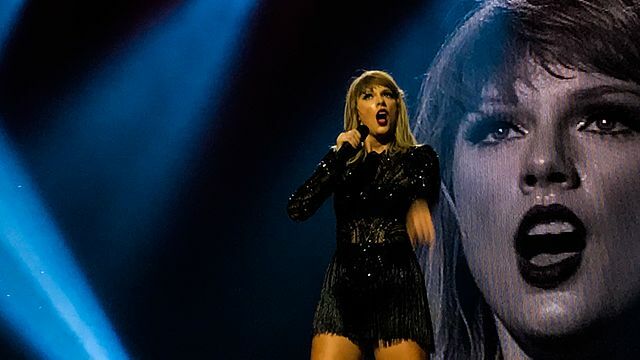Peru’s former president, Alberto Fujimori, has been released from prison after serving over 15 years behind bars. The 85-year-old was surrounded by hundreds of supporters as he left Lima’s Barbadillo prison. The country’s constitutional court upheld a presidential pardon that was issued six years ago. Fujimori is a controversial figure, having been imprisoned for corruption and human rights violations during his time in office. He had been serving a 25-year prison sentence before his release. Accompanied by his children, Kenji and Keiko Fujimori, he left the prison wearing a face mask.
To some, Alberto Fujimori is seen as the president who saved Peru from terrorism and economic collapse. However, to others, he is viewed as an authoritarian leader who disregarded democratic institutions to maintain his grip on power. Fujimori, the son of Japanese immigrants, ruled with an iron fist from 1990 to 2000, and his presidency was marked by numerous dramatic events. His government’s crackdown on violent insurgencies resulted in the deaths of approximately 69,000 people.
Years after leaving office, Fujimori was found guilty of bribery, abuse of power, and human rights abuses. He was sentenced to 25 years in prison, including for authorizing killings carried out by death squads. When he was initially sentenced in 2009 at the age of 70, it was widely believed that he would spend the rest of his life behind bars. However, in December 2017, he was transferred to a hospital due to health concerns, including low blood pressure and abnormal heart rhythm. It was then that President Pedro Pablo Kuczynski granted him a pardon, citing his incurable illness and the grave risk to his life in prison.
In conclusion, Alberto Fujimori’s release from prison has sparked mixed reactions in Peru. While some see him as a savior who brought stability to the country, others condemn him for his authoritarian rule and human rights abuses. His release comes after a presidential pardon was upheld by the constitutional court, citing his deteriorating health.
Original news source: Alberto Fujimori: Peru’s ex-president freed after 15 years in jail (BBC)
Listen:
Slow
Normal
Fast
Vocabulary:
| 1 | controversial | Causing disagreement or dispute |
| 2 | corruption | Dishonest or illegal behavior, especially by people in positions of power |
| 3 | authoritarian | A ruler who has complete control and does not allow opposition |
| 4 | grip | A firm hold or control over something |
| 5 | dramatic | Full of excitement, tension, or conflict |
| 6 | crackdown | A severe and sudden increase in the enforcement of laws or rules |
| 7 | bribery | The act of giving or receiving money or gifts in exchange for influence or favors |
| 8 | abuse | The act of treating someone in a harmful or cruel way |
| 9 | sentenced | Officially punished by a court of law |
| 10 | health concerns | Worries or issues related to a person’s well-being or physical condition |
| 11 | stability | The state of being stable or not changing |
| 12 | condemn | To strongly disapprove or criticize |
| 13 | upheld | Confirmed or supported by a higher authority or court |
| 14 | deteriorating | Becoming worse or less satisfactory over time |
| 15 | constitutional | Relating to the basic principles and laws of a country or organization |
Group or Classroom Activities
Warm-up Activities:
– News Summary
Instructions: Divide the class into pairs. Give each pair a copy of the article. Instruct them to read the article and then summarize the main points in 3-5 sentences. After they have finished, have each pair share their summaries with the class.
– Opinion Poll
Instructions: Divide the class into small groups. Give each group a list of questions related to the article, such as “Do you agree with the presidential pardon granted to Alberto Fujimori?” or “Should leaders who commit human rights abuses be allowed to go free?” Instruct the groups to discuss the questions and come up with their opinions. Afterward, have each group present their opinions to the class.
– Headline Creation
Instructions: Divide the class into small groups. Give each group a blank sheet of paper. Instruct them to create a catchy headline for the article that captures the main idea. Encourage creativity and brevity. Afterward, have each group share their headline and explain their reasoning behind it.
– Vocabulary Pictionary
Instructions: Write a list of vocabulary words from the article on the board, such as “authoritarian,” “insurgencies,” “bribery,” etc. Divide the class into pairs. Give each pair a whiteboard or a piece of paper. Instruct one student from each pair to choose a word from the list and draw a picture representing that word, while the other student guesses the word. After a set amount of time, have the students switch roles. Continue until all the words have been guessed.
– Think-Pair-Share
Instructions: Instruct the class to individually think about their opinion on whether Alberto Fujimori should have been released from prison. After a few minutes, pair up the students and have them discuss their opinions with their partner. Finally, have each pair share their opinions with the class and facilitate a brief discussion.
Comprehension Questions:
1. How long did Alberto Fujimori serve in prison?
2. What were the reasons for Fujimori’s imprisonment?
3. Who supported Fujimori as he left prison?
4. How is Fujimori viewed by different people in Peru?
5. What were some of the events that occurred during Fujimori’s presidency?
6. What crimes was Fujimori found guilty of?
7. What were the health concerns that led to Fujimori’s pardon?
8. How has Fujimori’s release been received in Peru?
Go to answers ⇩
Listen and Fill in the Gaps:
Peru’s former president, Alberto Fujimori, has been (1)______d from prison after serving over 15 years behind bars. The 85-year-old was (2)______ by hundreds of (3)______ as he left Lima’s (4)______ prison. The country’s constitutional court upheld a presidential pardon that was issued six years ago. Fujimori is a controversial figure, having been imprisoned for corruption and human rights violations during his time in office. He had been serving a 25-year prison sentence before his release. Accompanied by his children, Kenji and Keiko Fujimori, he left the prison (5)______ a face mask.
To some, Alberto Fujimori is seen as the president who saved Peru from (6)______ and economic collapse. However, to others, he is viewed as an authoritarian (7)______ who disregarded democratic (8)______ to maintain his grip on power. Fujimori, the son of Japanese immigrants, ruled with an iron fist from 1990 to 2000, and his presidency was marked by numerous dramatic events. His government’s crackdown on violent insurgencies resulted in the deaths of approximately 69,000 people.
Years after leaving office, Fujimori was found guilty of bribery, abuse of power, and human rights abuses. He was (9)______ to 25 (10)______ in prison, including for authorizing killings carried out by death squads. When he was initially sentenced in 2009 at the age of 70, it was widely (11)______ that he would spend the rest of his life behind bars. However, in December 2017, he was transferred to a hospital due to health concerns, including low (12)______ pressure and abnormal heart rhythm. It was then that President Pedro Pablo Kuczynski granted him a pardon, citing his (13)______ illness and the grave risk to his life in prison.
In conclusion, (14)______ Fujimori’s release from prison has sparked mixed reactions in Peru. While some see him as a savior who brought stability to the country, others condemn him for his authoritarian rule and human rights abuses. His release comes after a (15)______ pardon was upheld by the (16)______ court, citing his deteriorating health.
Go to answers ⇩
Discussion Questions:
Students can ask a partner these questions, or discuss them as a group.
1. What is your opinion of Alberto Fujimori’s release from prison?
2. How do you think the people of Peru feel about Fujimori’s release?
3. Do you think Fujimori should have been pardoned? Why or why not?
4. How would you feel if a former leader in your country was released from prison after being convicted of corruption and human rights abuses?
5. What do you think are the pros and cons of granting pardons to former political leaders?
6. Do you think Fujimori’s release will have any impact on Peru’s political landscape? Why or why not?
7. How do you think Fujimori’s release will affect the victims of his human rights abuses?
8. What do you think the international community’s reaction will be to Fujimori’s release?
9. How would you feel if a former leader in your country was seen as both a savior and an authoritarian figure?
10. Do you think Fujimori’s health concerns were a valid reason for his release? Why or why not?
11. How do you think Fujimori’s release will impact the perception of justice in Peru?
12. What do you think are the long-term consequences of pardoning a former leader convicted of human rights abuses?
13. How would you feel if a former leader in your country was pardoned due to health concerns?
14. Do you think Fujimori’s release will lead to any changes in Peru’s justice system? Why or why not?
15. How do you think Fujimori’s release will impact the relationship between the government and the people of Peru?
Individual Activities
Vocabulary Meanings:
Match each word to its meaning.
Words:
1. controversial
2. corruption
3. authoritarian
4. grip
5. dramatic
6. crackdown
7. bribery
8. abuse
9. sentenced
10. health concerns
11. stability
12. condemn
13. upheld
14. deteriorating
15. constitutional
Meanings:
(A) The act of treating someone in a harmful or cruel way
(B) A ruler who has complete control and does not allow opposition
(C) To strongly disapprove or criticize
(D) The state of being stable or not changing
(E) Relating to the basic principles and laws of a country or organization
(F) A severe and sudden increase in the enforcement of laws or rules
(G) A firm hold or control over something
(H) Full of excitement, tension, or conflict
(I) Confirmed or supported by a higher authority or court
(J) Becoming worse or less satisfactory over time
(K) Dishonest or illegal behavior, especially by people in positions of power
(L) The act of giving or receiving money or gifts in exchange for influence or favors
(M) Officially punished by a court of law
(N) Worries or issues related to a person’s well-being or physical condition
(O) Causing disagreement or dispute
Go to answers ⇩
Multiple Choice Questions:
1. How long did Alberto Fujimori serve in prison?
(a) Over 15 years
(b) 10 years
(c) 5 years
(d) Less than a year
2. What was Alberto Fujimori’s sentence for?
(a) Corruption and human rights violations
(b) Tax evasion
(c) Drug trafficking
(d) Fraud
3. Who accompanied Alberto Fujimori when he left prison?
(a) His wife
(b) His children, Kenji and Keiko Fujimori
(c) His lawyer
(d) His political allies
4. How many people died as a result of Alberto Fujimori’s government crackdown on violent insurgencies?
(a) Less than 1,000
(b) Approximately 10,000
(c) Approximately 100,000
(d) Approximately 69,000
5. What were the reasons cited for Alberto Fujimori’s pardon?
(a) Good behavior in prison
(b) Lack of evidence for his crimes
(c) Incurable illness and grave risk to his life in prison
(d) Political pressure
6. How was Alberto Fujimori’s presidency viewed by some?
(a) As a period of economic growth and stability
(b) As saving Peru from terrorism and economic collapse
(c) As a time of political turmoil and corruption
(d) As a time of democratic reform
7. What did Alberto Fujimori authorize that resulted in his guilty sentence?
(a) Massive infrastructure projects
(b) Economic reforms
(c) Diplomatic negotiations
(d) Killings carried out by death squads
8. What reaction did Alberto Fujimori’s release from prison spark in Peru?
(a) Overwhelming support
(b) Widespread protests
(c) Mixed reactions
(d) Celebration and joy
Go to answers ⇩
True or False Questions:
1. Fujimori’s release has sparked unanimous reactions in Peru, with everyone viewing him as a savior and applauding him for his democratic rule and respect for human rights.
2. Fujimori ruled with an iron fist from 1990 to 2000 and his presidency was marked by numerous dramatic events.
3. Alberto Fujimori is a controversial figure, having been imprisoned for corruption and human rights violations during his time in office.
4. Alberto Fujimori, Peru’s former president, has been released from prison after serving only a few years behind bars.
5. Fujimori’s release was surrounded by a small group of supporters as he left Lima’s Barbadillo prison.
6. The country’s constitutional court upheld a presidential pardon that was issued six years ago.
7. Fujimori’s government’s efforts to resolve violent insurgencies resulted in the deaths of less than 100 people.
8. Fujimori had been serving a 25-year prison sentence before his release.
Go to answers ⇩
Write a Summary:
Write a summary of this news article in two sentences.
Check your writing now with the best free AI for English writing!
Writing Questions:
Answer the following questions. Write as much as you can for each answer.
Check your answers with our free English writing assistant!
1. What were the reasons given for Alberto Fujimori’s release from prison?
2. How long was Alberto Fujimori in prison before being released?
3. What were some of the controversial actions taken by Fujimori during his time in office?
4. How do people in Peru view Fujimori’s presidency?
5. What were the health concerns that led to Fujimori’s pardon?
Answers
Comprehension Question Answers:
1. How long did Alberto Fujimori serve in prison?
Alberto Fujimori served over 15 years in prison.
2. What were the reasons for Fujimori’s imprisonment?
Fujimori was imprisoned for corruption and human rights violations during his time in office.
3. Who supported Fujimori as he left prison?
Fujimori was surrounded by hundreds of supporters as he left prison.
4. How is Fujimori viewed by different people in Peru?
Fujimori is viewed differently by different people in Peru. Some see him as a savior who brought stability to the country, while others condemn him for his authoritarian rule and human rights abuses.
5. What were some of the events that occurred during Fujimori’s presidency?
During Fujimori’s presidency, there were numerous dramatic events, including a crackdown on violent insurgencies that resulted in the deaths of approximately 69,000 people.
6. What crimes was Fujimori found guilty of?
Fujimori was found guilty of bribery, abuse of power, and human rights abuses. He was also found guilty of authorizing killings carried out by death squads.
7. What were the health concerns that led to Fujimori’s pardon?
Fujimori’s health concerns included low blood pressure and abnormal heart rhythm, which led to his transfer to a hospital.
8. How has Fujimori’s release been received in Peru?
Fujimori’s release has sparked mixed reactions in Peru, with some supporting his release due to his health concerns and others condemning it due to his past actions.
Go back to questions ⇧
Listen and Fill in the Gaps Answers:
(1) release
(2) surrounded
(3) supporters
(4) Barbadillo
(5) wearing
(6) terrorism
(7) leader
(8) institutions
(9) sentenced
(10) years
(11) believed
(12) blood
(13) incurable
(14) Alberto
(15) presidential
(16) constitutional
Go back to questions ⇧
Vocabulary Meanings Answers:
1. controversial
Answer: (O) Causing disagreement or dispute
2. corruption
Answer: (K) Dishonest or illegal behavior, especially by people in positions of power
3. authoritarian
Answer: (B) A ruler who has complete control and does not allow opposition
4. grip
Answer: (G) A firm hold or control over something
5. dramatic
Answer: (H) Full of excitement, tension, or conflict
6. crackdown
Answer: (F) A severe and sudden increase in the enforcement of laws or rules
7. bribery
Answer: (L) The act of giving or receiving money or gifts in exchange for influence or favors
8. abuse
Answer: (A) The act of treating someone in a harmful or cruel way
9. sentenced
Answer: (M) Officially punished by a court of law
10. health concerns
Answer: (N) Worries or issues related to a person’s well-being or physical condition
11. stability
Answer: (D) The state of being stable or not changing
12. condemn
Answer: (C) To strongly disapprove or criticize
13. upheld
Answer: (I) Confirmed or supported by a higher authority or court
14. deteriorating
Answer: (J) Becoming worse or less satisfactory over time
15. constitutional
Answer: (E) Relating to the basic principles and laws of a country or organization
Go back to questions ⇧
Multiple Choice Answers:
1. How long did Alberto Fujimori serve in prison?
Answer: (a) Over 15 years
2. What was Alberto Fujimori’s sentence for?
Answer: (a) Corruption and human rights violations
3. Who accompanied Alberto Fujimori when he left prison?
Answer: (b) His children, Kenji and Keiko Fujimori
4. How many people died as a result of Alberto Fujimori’s government crackdown on violent insurgencies?
Answer: (d) Approximately 69,000
5. What were the reasons cited for Alberto Fujimori’s pardon?
Answer: (c) Incurable illness and grave risk to his life in prison
6. How was Alberto Fujimori’s presidency viewed by some?
Answer: (b) As saving Peru from terrorism and economic collapse
7. What did Alberto Fujimori authorize that resulted in his guilty sentence?
Answer: (d) Killings carried out by death squads
8. What reaction did Alberto Fujimori’s release from prison spark in Peru?
Answer: (c) Mixed reactions
Go back to questions ⇧
True or False Answers:
1. Fujimori’s release has sparked unanimous reactions in Peru, with everyone viewing him as a savior and applauding him for his democratic rule and respect for human rights. (Answer: False)
2. Fujimori ruled with an iron fist from 1990 to 2000 and his presidency was marked by numerous dramatic events. (Answer: True)
3. Alberto Fujimori is a controversial figure, having been imprisoned for corruption and human rights violations during his time in office. (Answer: True)
4. Alberto Fujimori, Peru’s former president, has been released from prison after serving only a few years behind bars. (Answer: False)
5. Fujimori’s release was surrounded by a small group of supporters as he left Lima’s Barbadillo prison. (Answer: False)
6. The country’s constitutional court upheld a presidential pardon that was issued six years ago. (Answer: True)
7. Fujimori’s government’s efforts to resolve violent insurgencies resulted in the deaths of less than 100 people. (Answer: False)
8. Fujimori had been serving a 25-year prison sentence before his release. (Answer: True)
Go back to questions ⇧













